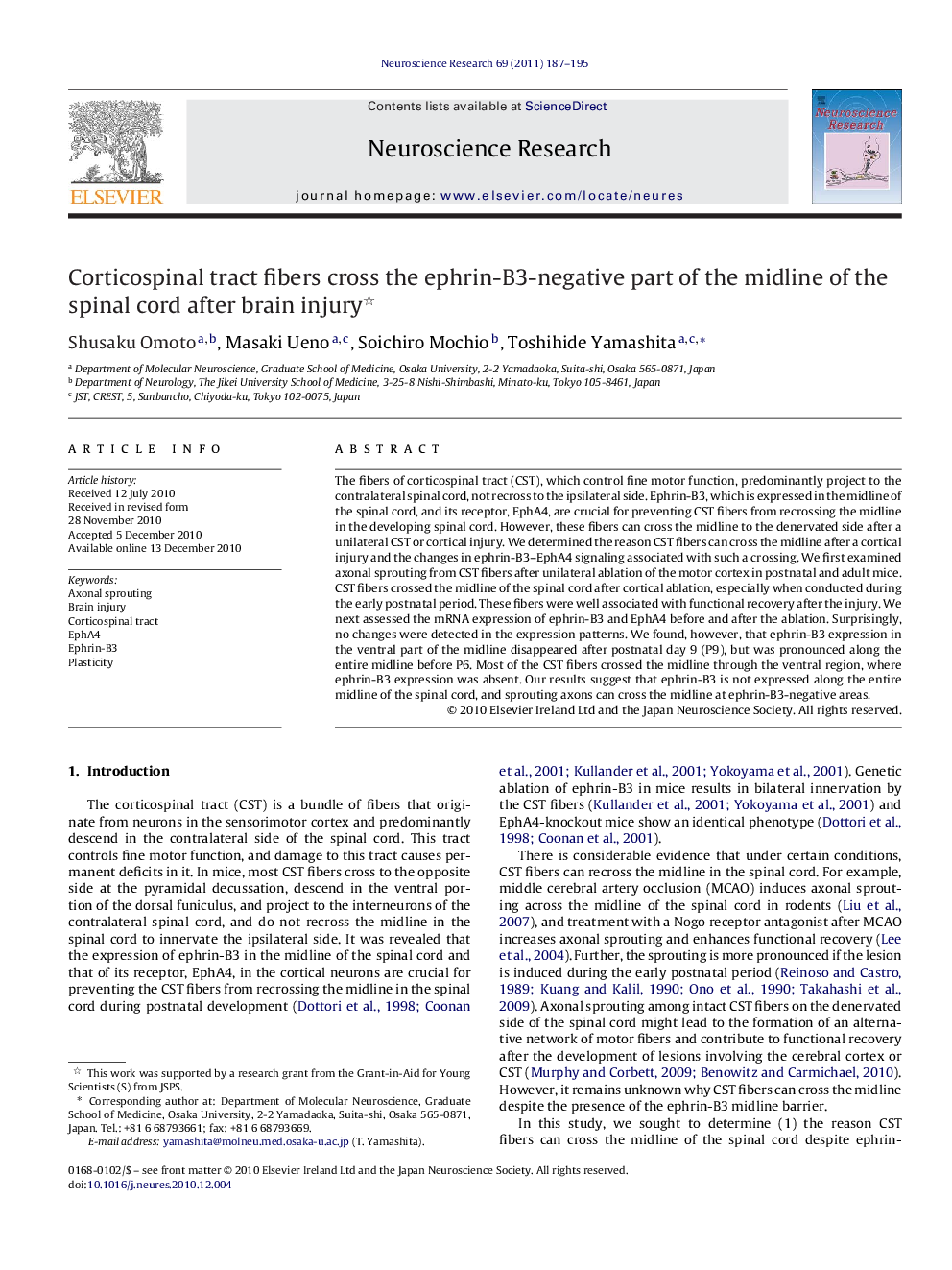| Article ID | Journal | Published Year | Pages | File Type |
|---|---|---|---|---|
| 4351595 | Neuroscience Research | 2011 | 9 Pages |
The fibers of corticospinal tract (CST), which control fine motor function, predominantly project to the contralateral spinal cord, not recross to the ipsilateral side. Ephrin-B3, which is expressed in the midline of the spinal cord, and its receptor, EphA4, are crucial for preventing CST fibers from recrossing the midline in the developing spinal cord. However, these fibers can cross the midline to the denervated side after a unilateral CST or cortical injury. We determined the reason CST fibers can cross the midline after a cortical injury and the changes in ephrin-B3–EphA4 signaling associated with such a crossing. We first examined axonal sprouting from CST fibers after unilateral ablation of the motor cortex in postnatal and adult mice. CST fibers crossed the midline of the spinal cord after cortical ablation, especially when conducted during the early postnatal period. These fibers were well associated with functional recovery after the injury. We next assessed the mRNA expression of ephrin-B3 and EphA4 before and after the ablation. Surprisingly, no changes were detected in the expression patterns. We found, however, that ephrin-B3 expression in the ventral part of the midline disappeared after postnatal day 9 (P9), but was pronounced along the entire midline before P6. Most of the CST fibers crossed the midline through the ventral region, where ephrin-B3 expression was absent. Our results suggest that ephrin-B3 is not expressed along the entire midline of the spinal cord, and sprouting axons can cross the midline at ephrin-B3-negative areas.
Research highlights▶ Sprouting axons of the CST can cross the midline at ephrin-B3-negative areas. ▶ Ephrin-B3 is not expressed along the entire midline of the spinal cord. ▶ Ephrin-B3 expression in the midline disappears after postnatal day 9.
